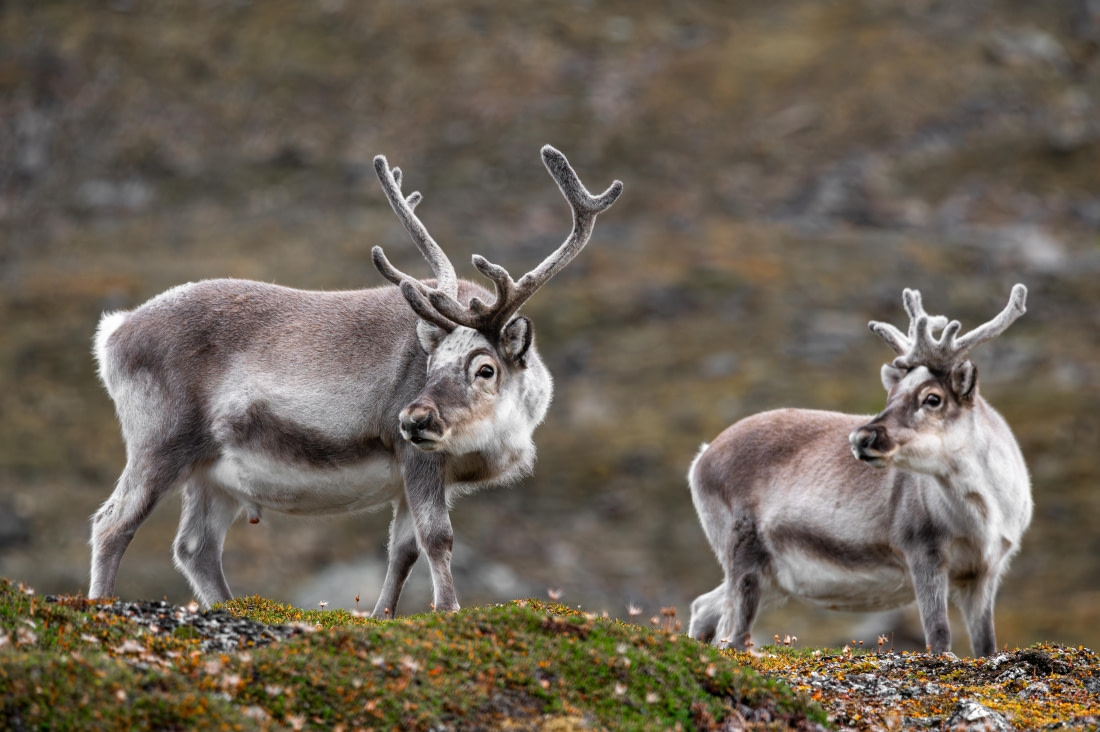As Lillian Gish says in Night of the Hunter, “It’s a hard world for little things.”
This is especially true in the Arctic and Antarctica, but that does not mean the conditions there are too brutal to support life - even its smaller varieties. There are many modest-sized mammals that call the polar regions home, from leopard seals and hourglass dolphins to Arctic foxes and hares. In this entry we shine the spotlight on some of them.

Antarctic transplants, fossils, and small species
Antarctica has no native or permanent human population, but people have introduced many small mammals to the continent in the past. Some of the most common transplants include rats, sheep, pigs, reindeer, mice, cats, rabbits, even fish. The ecological impact of these species varied. These days no animals are brought to Antarctica.

While there are no naturally occurring land mammals in Antarctica now, this does not mean the Great White Continent was always like this. In fact, a research team from America discovered the continent’s first land mammal fossil back in 1982. The tiny marsupial bones found on Seymour Island are believed to be approximately 40 million years old, and their discovery helped support the theory that Antarctica, South America, and Australia were once a single large land mass.
In 1999 another research team found evidence that land mammals once existed on Seymour Island. The fossils they dug up pointed to a diverse list of marsupials that included at least five different subspecies. The team even dubbed one of these marsupials “opossum-like.” Due to these discoveries and others, there are now at least 10 land mammal species known to have inhabited Antarctica millions of years ago.
Though land mammals in Antarctica are scarce, marine mammals are another story. Most of these are seals, such as the Antarctic fur seal, crabeater seal, Weddell seal, elephant seal, Ross seal, and aforementioned leopard seal. But there is also the rarely seen Commerson’s dolphin and hourglass dolphin. Take an Antarctic cruise and you stand a good chance of seeing a range of beautiful wildlife.

The small (land and marine) mammals of the Arctic
Roughly 12,000 miles (19,000 km) separate Antarctica from the Arctic, where land mammals large and small are much more prevalent. One of the most common is the Arctic hare, which you can see in Greenland, but there are also Svalbard reindeer, Arctic foxes, and a variety of rodents and seals.

Not surprisingly, these mammals have to be as tough and capable as their Antarctic counterparts to survive. Arctic foxes, for example, have the most insulating fur of any animal on the planet. Arctic hares, meanwhile, can run up to 40 mph (60 kph) when startled.
Other small mammals of the Arctic include the red fox, Arctic ground squirrel, tundra vole, Arctic lemming, and musk rat. And while we do not see them in our areas of operation, the gray wolf and Alaskan tundra wolf should be mentioned for their beauty alone. Taking an Arctic trip to Svalbard or Greenland will expose you to some of the most exotic species in the far north.

Join us on an Arctic or Antarctic cruise to see these amazing animals in person
Reading about these incredible polar species is great, but seeing them (and others) firsthand is a whole other level. We offer a wide variety of trips that explore the Arctic and Antarctica - some of which focus on whales and seabirds, others that go to the best places for spotting walruses and polar bears. So take a look at our current offers, and let’s go exploring!

Blog



8 Whales You Might See During Your Antarctica Cruise

The Evolving Shipboard Eco-traveler

Day and night in Antarctica

How Arctic Wildlife Differs from Antarctic

Polar Bears and Pack Ice: 22 Pics from North Spitsbergen

The disastrous expedition in the Arctic west

The First Buildings in Antarctica: Borchgrevink’s Historic Huts

Explore Antarctica Without Leaving Your Couch

Greenlandic Inuit Beliefs

The Best Arctic and Antarctic Trips for Families

What to Pack for Your Expedition Cruise to the Arctic or Antarctica

Antarctica’s Hourglass Dolphin

The Arctic Hare: Easter Bunny

Eight Ultimate Antarctica Adventures

Svalbard a Disneyland for geologists

Eight Antarctic Misconceptions

The Seven Best Things to Do in Antarctica

The Giant Petrels of King George Island

Arctic on Foot: Hiking and Snowshoeing the Far North









